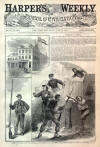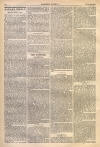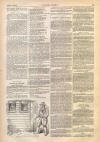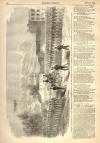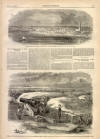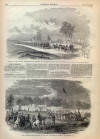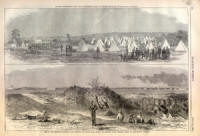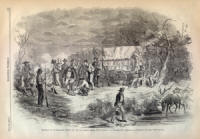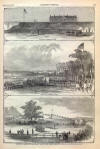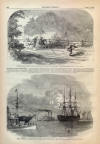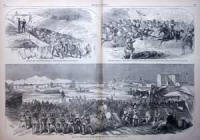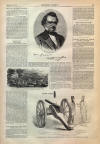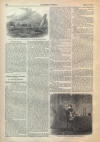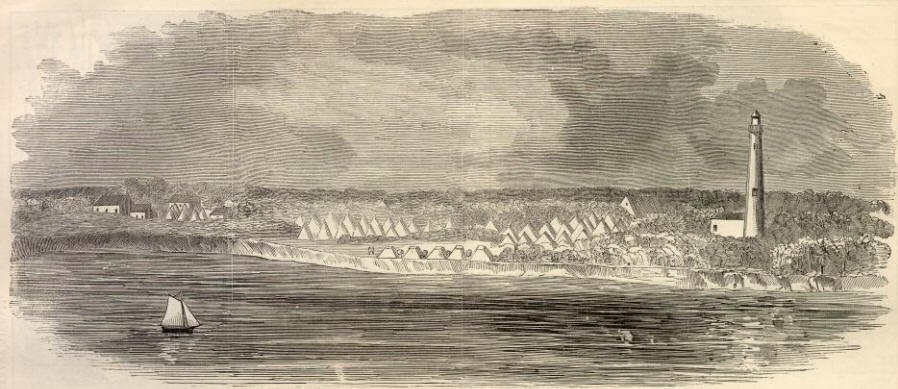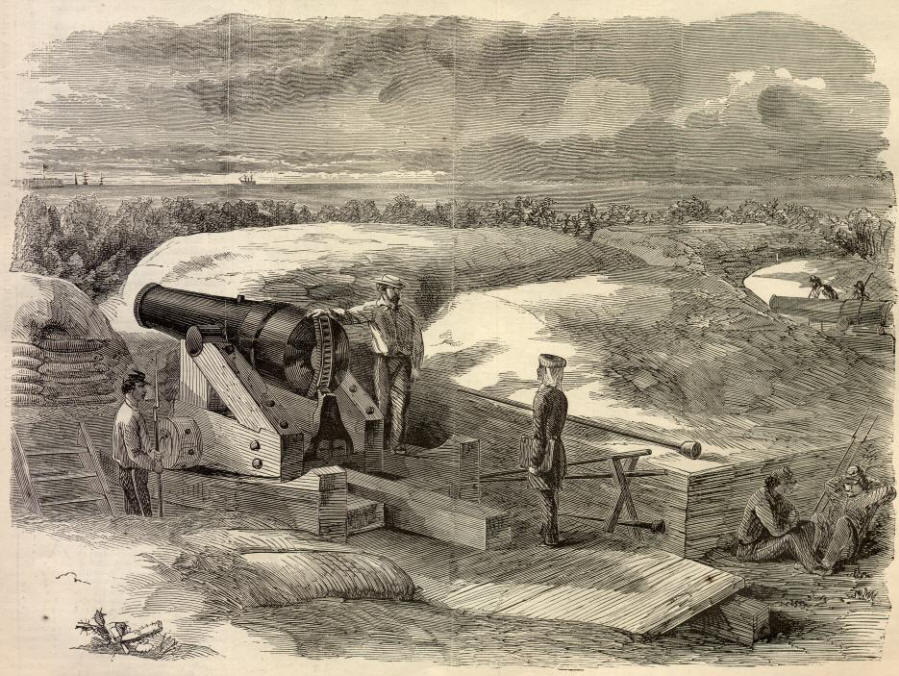|
This Site:
Civil War
Civil War Overview
Civil War 1861
Civil War 1862
Civil War 1863
Civil War 1864
Civil War 1865
Civil War Battles
Confederate Generals
Union Generals
Confederate History
Robert E. Lee
Civil War Medicine
Lincoln Assassination
Slavery
Site Search
Civil War Links
Civil War Art
Revolutionary War
Mexican War
Republic of Texas
Indians
Winslow Homer
Thomas Nast
Mathew Brady
Western Art
Civil War Gifts
Robert E. Lee Portrait
|
GENERAL BRAGG'S CAMP, AS SEEN
FROM
FORT PICKENS.—[DRAWN BY AN OFFICER OF THE
FORT.]
OUR ILLUSTRATIONS OF FORT
PICKENS.
WE publish on page 374, from a
sketch by an officer in Fort Pickens, a view of a
MORTAR BATTERY LATELY ERECTED
ON SANTA ROSA ISLAND by the Federal troops, and on this page a VIEW OF GENERAL
BRAGG'S CAMP, from a drawing by the same officer, and a drawing of the interior
of one of the SAND-BAG BATTERIES BEARING ON FORT PICKENS, from a sketch by our
artist who has been traveling with W. H. Russell, Esq., LL.D., Correspondent of
the London Times.
The officer to whom we are
indebted for the two first-mentioned pictures thus writes us concerning them:
FORT PICKENS, May 11, 1861.
With this you will receive a
sketch of part of one of the Federal Mortar Batteries on Santa Rosa Island, near
Fort Pickens.
This battery, a portion of which
is seen in the sketch, was recently built by Lieutenant Tidball, of the 2d
Artillery. The central object in the view is a bomb-proof shelter,
used as a retreat from a heavy
fire, the mass of sand on its roof forming a perfect security against shells of
the largest calibre. The powder and loaded shells are kept in similar shelters,
according to the usage of war. The ruin of brick-work on its left, and but a few
feet in its rear, is all that remains of a large redoubt once held by the
English. Whether they built it or no I can not tell, as in those days there was
a proverb that the " Spanish built forts, the English held them, and the French
took them." When General Jackson came down to
Pensacola in 1814, to look after
Federal interests in his unauthorized but energetic way, he found the Spanish
occupying several points about the place, all protected by a network of friendly
relations with the Home Secretary in England, who was well represented on the
occasion by a fine body of English troops fresh from the Peninsula. A portion of
these occupied the redoubt whose ruins are seen in the sketch. Jackson cut the
network by opening fire without orders—an example that might be followed with
advantage by some Federalists of the present day. The Spanish and English
withdrew after blowing up the forts and redoubts. In 1819 they returned again,
but again the Federalists ousted them. It is a curious coincidence that our
Government should occupy these points immortalized in history—that it should be
here building up new works to teach its rebellious children a lesson that they
might have learned on the site of the old. I looked with curious feeling upon
some old nine-pound shot that the workmen turned up the
other day while building the
battery. Those shot were fired by Jackson, in all probability, and answered by
some long " thirty-twos," which now lie on some old logs at the left of the
battery. Many years have rolled by since their hoarse voices were heard by
Jackson as he threw off the dead weight of official ignorance and drove the
intruders from Florida. You can still see the big " G. R." on the reinforce of
the guns, but time has strewn huge scales from their muzzles amidst the grass
where they have lain neglected so long.
This battery is only a part of
the defenses outside of the fort. This side of it the ground rolls off in a
series of sand hills, which form excellent natural traverses, and would well
conceal from the enemy as many as ten or fifteen regiments.
In sending us the view of General
Bragg's camp, he says:
FORT PICKENS, May 12, 1861.
Inclosed I send you a sketch of
the encampment west of the light-house and nearly opposite Fort Pickens. In
front of the tents, near the shore, is seen one of their sand batteries, in
which they have mounted several
Columbiads. It is reported that they have now
10,000 men here ; but I imagine 6000 is much nearer the exact number. This
battery commands the entrance to the harbor, but is too far off to do much
injury to the fort, the distance being nearly 1 3/4 miles. The light-house seen
on the right is a very fine
one, but has not been lighted
since the night of April 12, when it was suddenly extinguished during a great
scare of the secessionists, caused by the firing of a few guns from the
Wyandotte, which led them to suspect the fleet was coming in. They immediately
extinguished the light and lighted up their batteries. In the mean time, Captain
Vodges's company landed, captured one of their guardboats, which, as soon as the
troops were in the fort, was allowed to go back, and convey to General Bragg the
gratifying intelligence that the fort was reinforced.
COLONEL MOREHEAD'S CAMP
AT BALTIMORE.
WE publish on page
374 a
VIEW OF
THE ENCAMPMENT OF UNITED STATES VOLUNTEERS, UNDER COLONEL MOREHEAD, on the land
adjoining Patterson's Park, Baltimore. Patterson's Park will be seen on the left
of the tents in the picture. If the late accounts from Baltimore be correct,
this encampment will possess remarkable interest before long.
|
